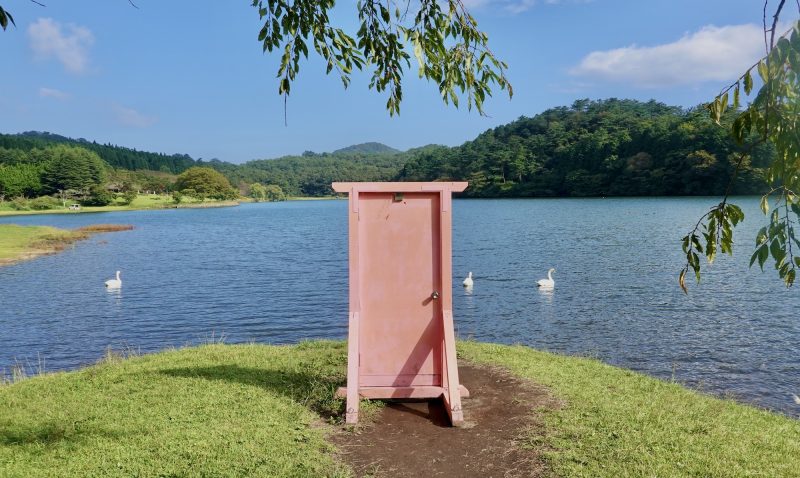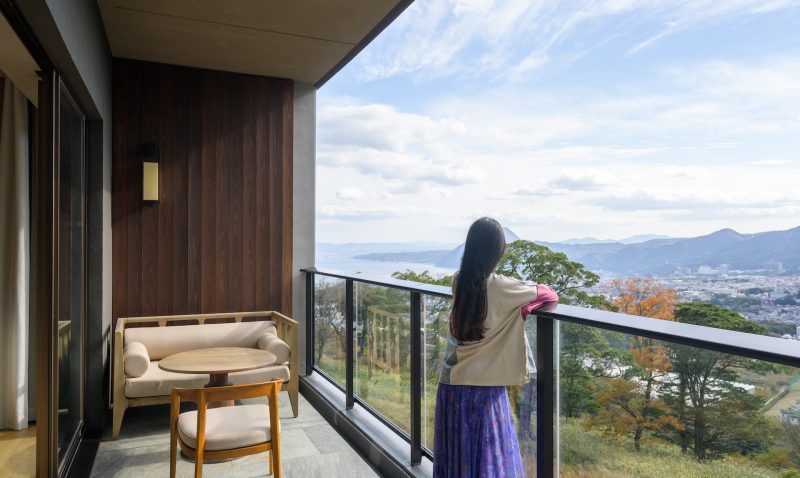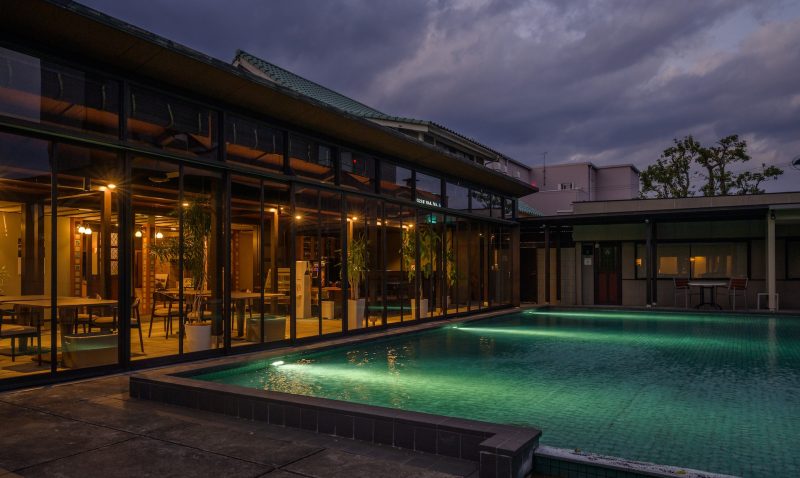
Fans of Demon Slayer: Kimetsu no Yaiba might be surprised to learn that parts of the story seem almost destined to exist in Beppu. From mountain shrines guarded by dragons to hot-spring “hells” watched over by redeemed demons said to protect the people, the city’s landscapes mirror the world of Tanjiro and Nezuko in more ways than one.
Hachiman Kamado Shrine
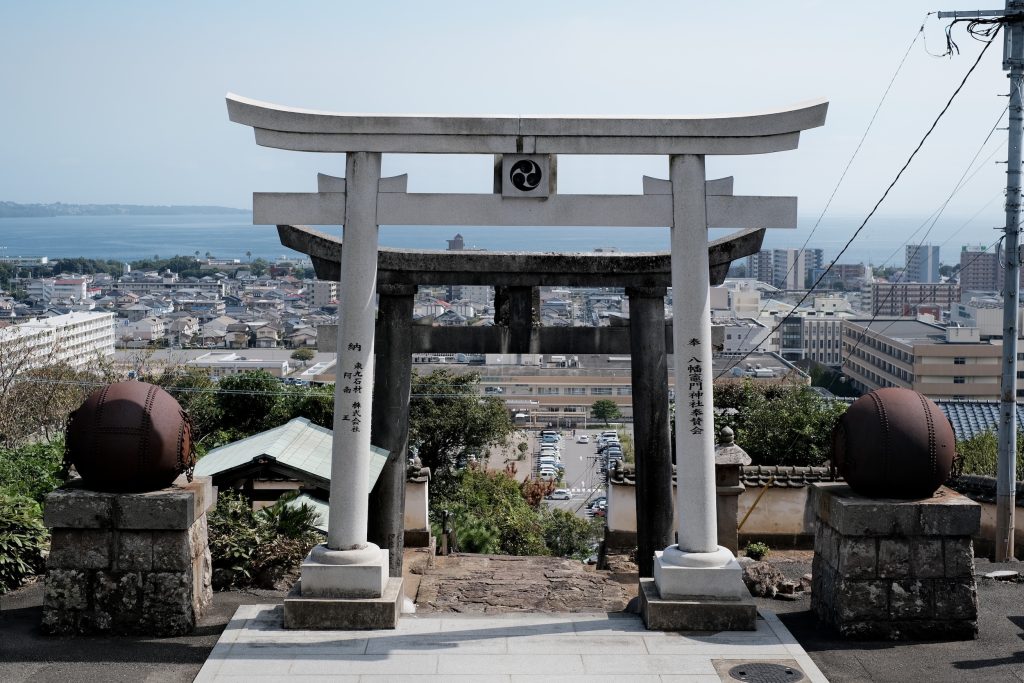
High on Mt. Tsurumi, Hachiman Kamado Shrine is known for protecting homes and warding off evil spirits — but lately, it’s also drawn another kind of visitor: Demon Slayer fans.
The resemblance begins with its name. The word “Kamado,” shared with Tanjiro Kamado’s family name, already sparks excitement. Inside the main hall, a dragon deity painted on the ceiling protects the shrine from fire, its form uncannily similar to the water dragon that swirls behind Tanjiro’s “Water Breathing” techniques.

The parallels continue in legend. According to local lore, the long stone staircase leading up to the shrine was built by a man-eating demon under divine command. It completed ninety-nine before sunrise, but as the first light broke, the demon fled and was never seen again—just as sunlight destroys demons in the story. Nearby, visitors can try on the demon’s forgotten stone sandals, said to grant strength to anyone who slips them on.
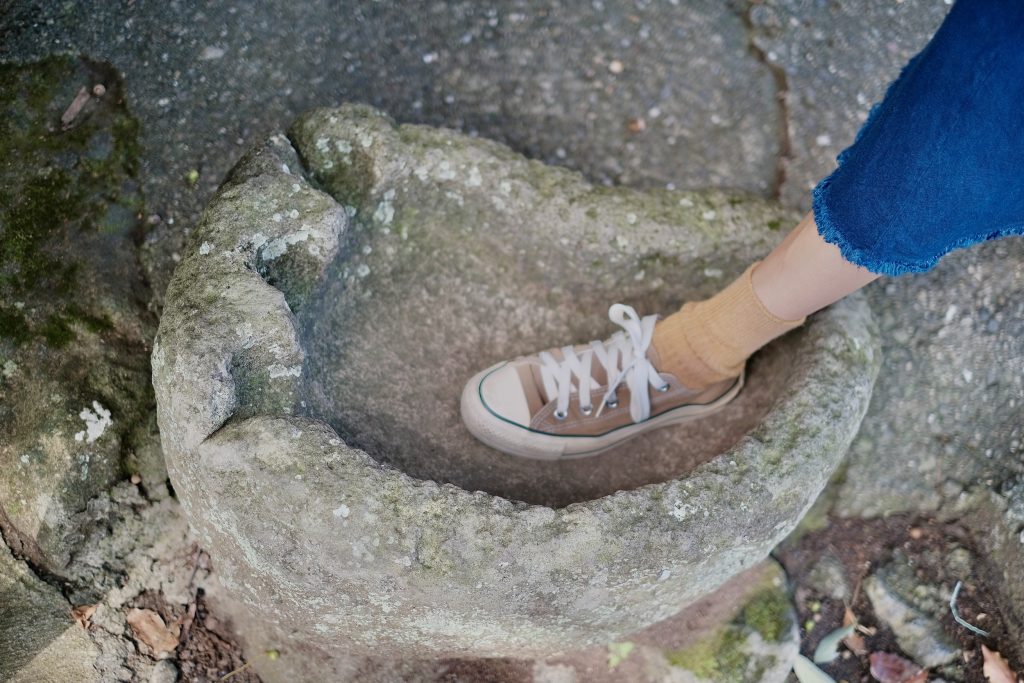
At the top of the staircase stands a massive iron naval mine, once dedicated by the Japanese Navy after World War I. Visitors can’t help noticing its resemblance to the spiked weapon wielded by Gyomei Himejima, the Stone Hashira, making it another fun point of connection for those on their own Demon Slayer pilgrimage.

All around the shrine, you’ll find ema—wooden plaques covered with drawings and messages from fans all over Japan, many featuring favorite characters and wishes written with devotion worthy of the Demon Slayer Corps.
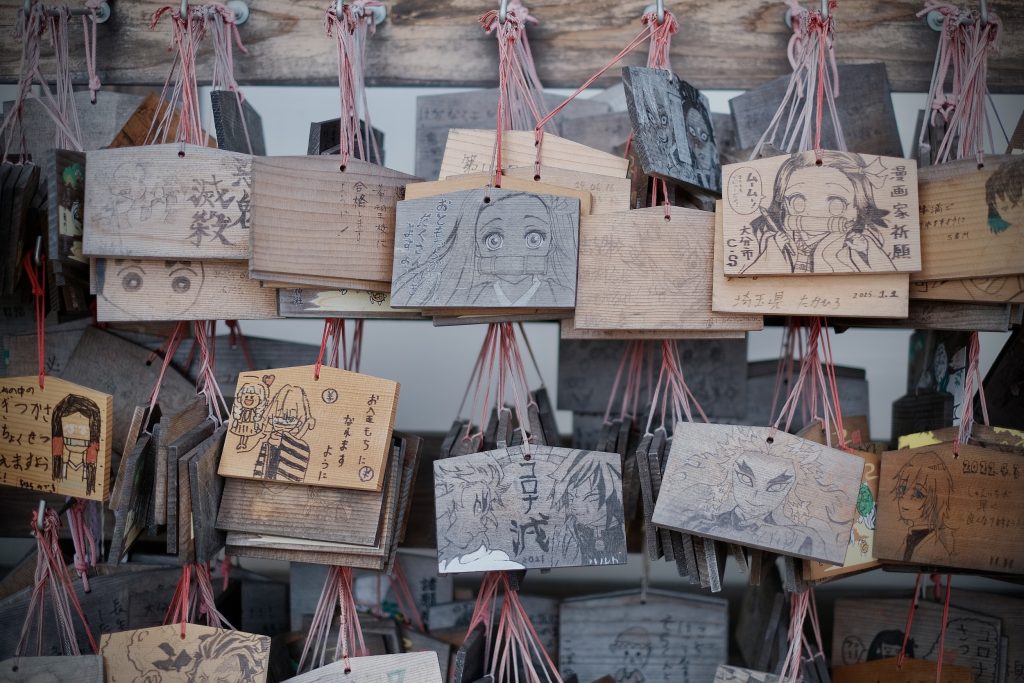
Even the omamori charms sold here come in motifs and colors that subtly echo the patterns of the characters’ clothing—a small but delightful touch for fans who look closely.

There’s even a sacred 500-year-old tree called the Tamayori Tree, sharing its name’s reading with Tamayo, the gentle demon doctor who aids Tanjiro.

And each New Year, the shrine’s Kamado Kagura dance is performed through the night, echoing the Hinokami Kagura, or Dance of the Fire God, that Tanjiro inherits.
- Access: Hachiman Kamado Shrine is located in the Uchikamado area of Beppu City, about a 5-minute drive from JR Kamegawa Station on the Nippo Main Line. Free parking is available near the entrance torii gate.
- Address: 1542 Uchikamado, Beppu City, Oita Prefecture 874-0016
Kamado Hell
Just a short drive from the shrine, you’ll find Kamado Jigoku (Kamado Hell) — a place so full of steam, mystery, and folklore that it feels straight out of the Demon Slayer universe.
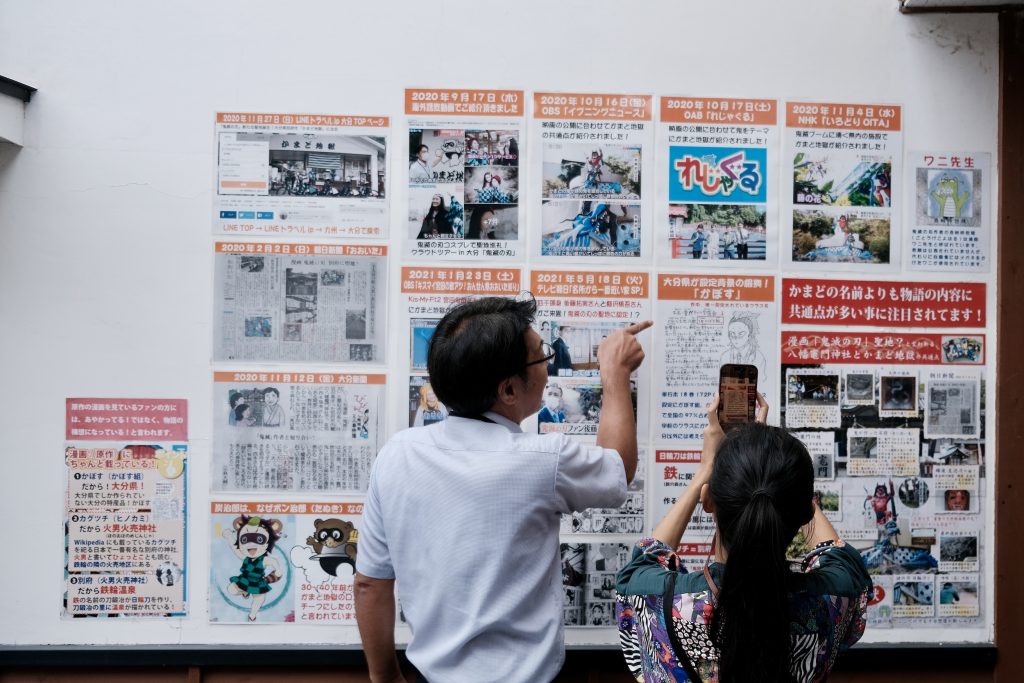
Right at the entrance, a wall of displays lays out every uncanny link between the facility and the manga in almost shocking detail — from character inspirations to curious motifs and name origins — making it clear why fans see this as one of the strongest “real-world connections” to the series.

The name “Kamado” dates back over a century, when rice for Hachiman Kamado Shrine’s festival was cooked using steam from these very springs. At the entrance, a red demon statue still watches over the bubbling springs and the people who visit them— a fiery reminder that Beppu’s heat isn’t just from the earth, but from myth itself.
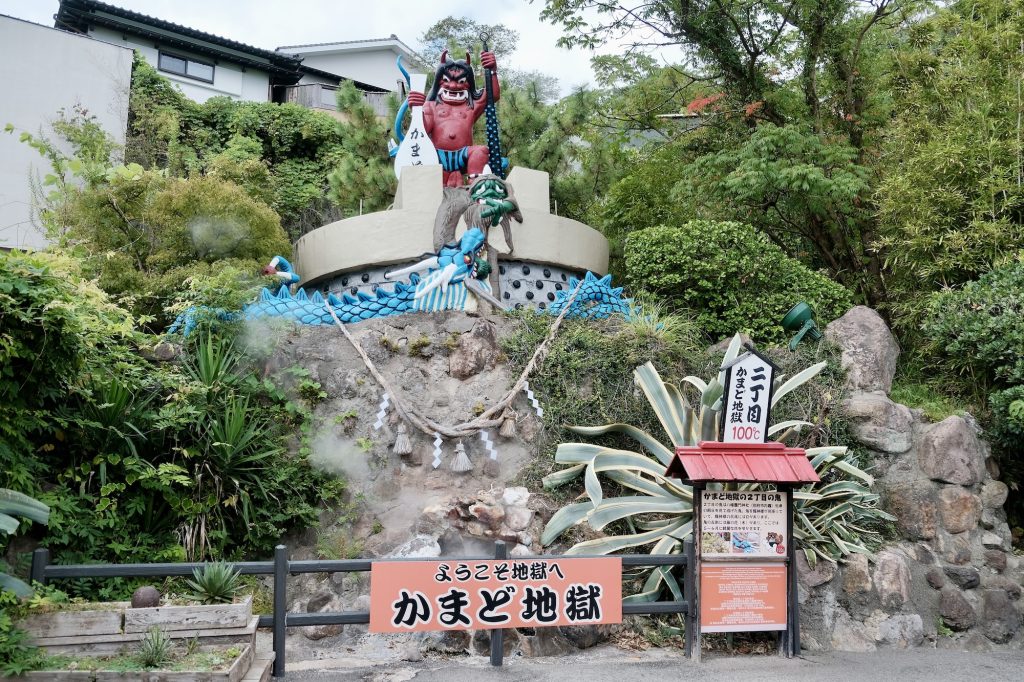
Many believe that Beppu’s Kamado Hell may be connected to the fiery story world of Demon Slayer: Kimetsu no Yaiba. Around the grounds, fans can spot elements that feel pulled straight from the pages of Demon Slayer: a demon statue that guards the boiling springs of Kamado Hell, demon-slaying motifs scattered throughout the site, and a dragon relief reminiscent of Tanjiro’s ultimate water breathing technique.
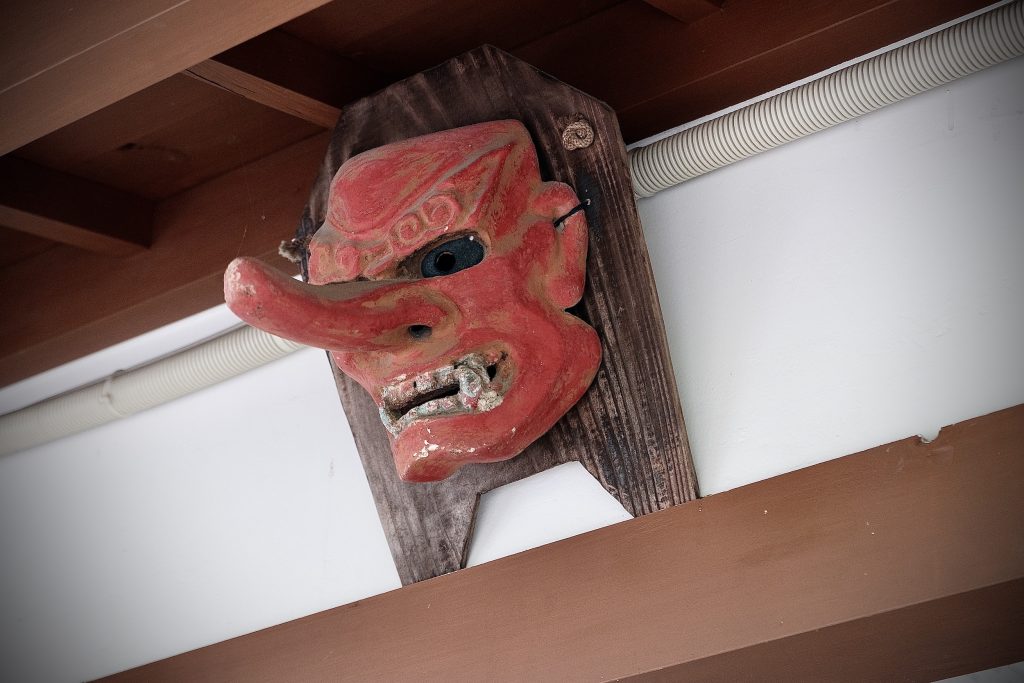
Clusters of wisteria flowers, known in the story for repelling demons, bloom near the walkways, while a weathered Tengu mask displayed at one of the gates looks strikingly similar to Urokodaki’s.
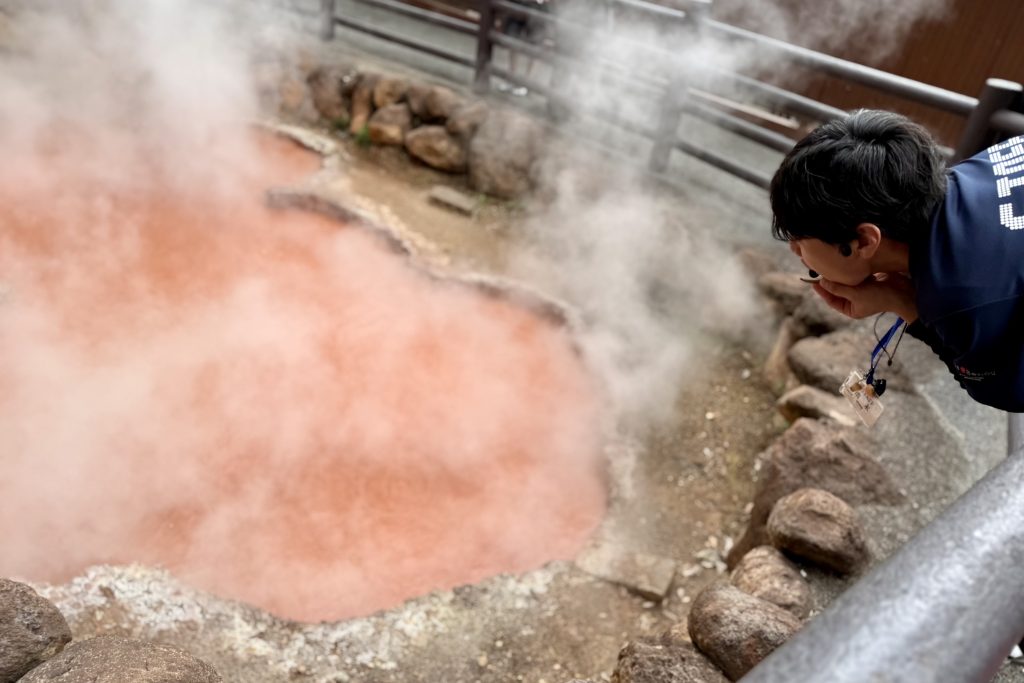
It doesn’t stop there. Kamado Hell even has a playful “breathing demonstration,” where staff blow incense smoke across the pools to show how the geothermal heat changes the air — fans swear it feels like witnessing a real Water Breathing technique in action.
Whether coincidence or cosmic connection, it’s easy to see why many believe the fiery imagination behind Kimetsu no Yaiba might have sparked right here in Beppu’s steamy depths.

Fans have noted even more coincidences nearby — from a neighboring Crocodile Hell recalling the author’s crocodile avatar, to the Kannawa hot-spring district that mirrors the Swordsmith Village Arc.
Coincidence or inspiration, the connections are irresistible.
- Access: It’s about a 20-minute drive from JR Beppu Station or a 5-minute drive from JR Kamegawa Station. Local buses bound for Kannawa Onsen stop nearby.
- Address: 5 Kannawa Miyuki, Beppu City, Oita Prefecture 874-0045
Umi Jigoku
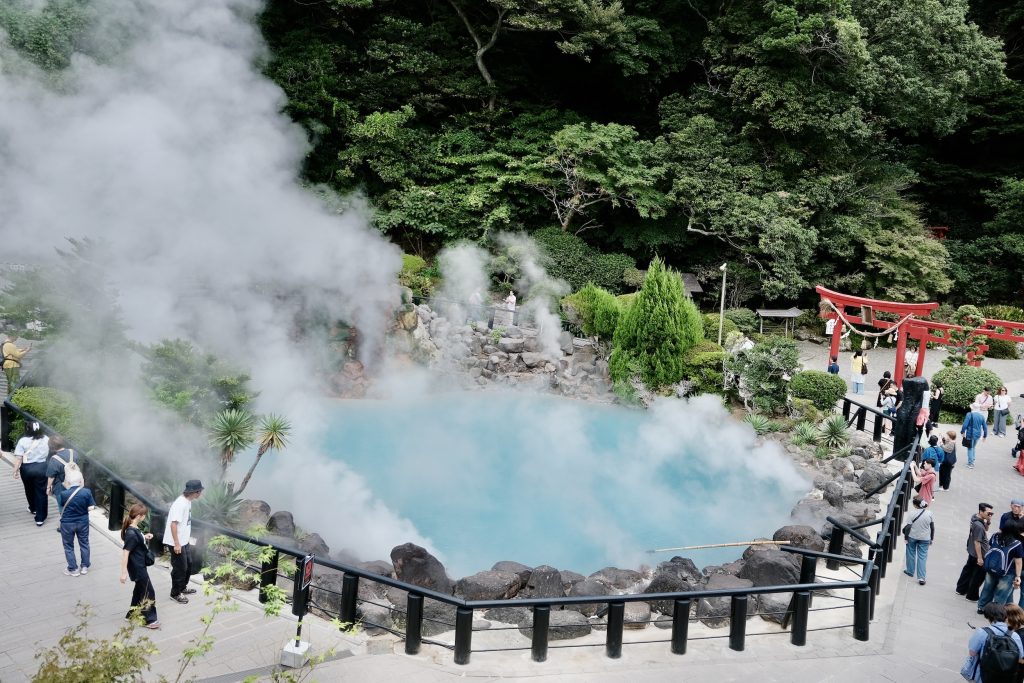
A short drive from Kamado Hell brings you to Umi Jigoku, or “Sea Hell” — one of Beppu’s most iconic and photogenic hot springs. Its striking cobalt-blue color comes from naturally dissolved minerals, but to Demon Slayer fans, it’s hard not to see something more mystical in those shimmering depths.
The brilliant hue instantly calls to mind the elusive Blue Spider Lily, a flower that holds the key to Muzan Kibutsuji’s immortality and the story’s greatest mysteries.
- Access: Accessible via local bus from JR Beppu Station to the “Umi Jigoku-mae” stop. Free parking is available on-site.
- Address: 559-1 Kannawa, Beppu City, Oita Prefecture 874-0045
Follow the Steam on Your Own Demon Slayer Journey
From the sacred steps of Hachiman Kamado Shrine to the fiery pools of Kamado Hell and the glowing blue waters of Umi Jigoku, Beppu is filled with places that seem to echo the world of Demon Slayer. Each site has its own story — demons that vanish with sunrise, dragons that guard against fire, and hot springs that shimmer like scenes from an anime.
Even for casual visitors, following these spots through Beppu’s rising steam feels like walking through a living legend. And for fans, it’s a journey where the lines between myth and manga blur — a reminder that sometimes, Japan’s real magic hides in plain sight.
